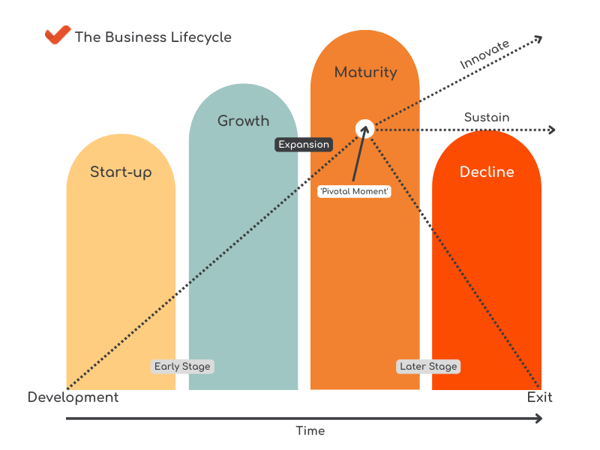ASP: Another Strategy Post, but a good one (I hope)
Open this if you want to read a real deal example of what a strategy write up looks like for a sports data and analytics company.
Strategy is one of those hot topics in the bubble of product management discourse. There are enough books, blog posts, newsletter entries, frameworks, and LinkedIn musings on this topic to fill up a library.
Yet many people still seem to struggle with understanding the concept of strategy in business and how product strategy fits in.
Part of the reason why I think there is confusion is due to the number of ways strategy is explained, in particular product strategy. But then when I reflect on this reason and I find that, abstractly, these definitions all tend to converge on the same core meaning. Below are a few definitions that illustrate this convergence.
True strategy is about placing bets and making hard choices. The objective is not to eliminate risk but to increase the odds of success. - Roger L. Martin
Strategy is simply resource allocation. When you strip away all the noise, that’s what it comes down to. Strategy means making clear cut choices about how to compete. You cannot be everything to everybody, no matter what the size of your business or how deep its pockets. - Jack Welch
The essence of strategy is choosing what not to do. - Michael Porter
In other words, strategy is an articulation of what you are going to do (and not do) to win.
Overview of Organization Level Strategy
The two most fundamental strategic choices are deciding where to play and how to win. - Roger L. Martin
Before jumping in to business and product strategy, I think it is useful to highlight that where a company is in the business lifecycle has significant influence on its business and product strategy.
There are 4 main organization level strategies that describe the overall direction of a company:
Growth Strategy: This strategy aims to increase market share or expand into new markets. It can involve market penetration, product development, market development, or diversification. This is where startups and scale-ups live.
Stability Strategy: Focused on maintaining current operations and market position, this strategy emphasizes incremental improvements rather than aggressive expansion. This is the ‘pivotal moment’ in the chart where a scale-up has grown multiple ways and is reached maturity. They may have hit ceilings in some markets and with some of their products but revenue and cash flow are stable. In the stock market, these are called ‘value stocks.’
Retrenchment Strategy: Involves reducing operations to cut costs and strengthen financial health. This might include downsizing or divesting non-core business units. This organization strategy is often found in mature and declining companies who are looking for quicks wins to show on their financial statements and to buy time to figure out what to do.
Reinvention Strategy: This transformative approach involves significant changes to the business model or operations to adapt to new market conditions or consumer behavior. This organization strategy is usually employed within startups who grew too fast and can’t turn a profit.
Most tech startups and scale-ups are employing a growth strategy.
Overview of Business Strategy
Business-level strategies determine how a company competes in a specific market. They focus on positioning products or services to gain a competitive advantage. Michael Porter’s framework, Porter’s Generic Strategies, define 4 common strategies:
Cost Leadership: Aim to be the lowest-cost producer in the industry.
Differentiation: Offer unique products or services that customers value.
Focus: Target a specific market segment, using either cost leadership or differentiation within that segment.
Cost-Focus: Offer the lowest cost to a specific segment
Differentiation-Focus: Offer unique value to a specific segment
Most tech startups are typically competing with a differentiation-focus strategy.
Let’s Write Some Strategy Baby
Alright, we’ve done enough groundwork here to get to the meat of this post. This month’s entry is designed to show you a practical articulation of a what a synthesized company and product strategy might look like.
For the last 4 years I have worked in sports data and analytics. A lot of people ask me about what a company like this even does and so I feel like this is a perfect opportunity to share that information in the form of articulating the strategy of a fictional sports data and analytics scale-up called Victory Analytics.
FRAMEWORK ALERT: In this post I will be using Reforge’s ‘Strategy Stack’. I find it very easy to grasp and also it shares a similar structure to another popular framework from Roman Pichler. I highly recommend reading the entire Reforge post, however, I have included a few graphics here that illustrate the relationship of the different components in the framework.Victory Analytics Strategy Deck
Organization & Business Strategy
Organization Stage (and Strategy): Growth
Generic Business Strategy: Differentiation-Focus
Vision & Mission
We envision a world where every sports team, from grassroots to professional, can harness the power of data to reach their full potential. That’s why it is our mission to provide cutting-edge data analytics that empower teams to make winning decisions and foster player development.
Company Strategy (AKA How We Win)
How are we going to turn this ambitious vision into reality over the next 1 to 3 years? Let's break down our game plan (This should be revisited as conditions change!):
Data Collection Systems: We are creating partnerships with leagues and teams while developing proprietary technologies like wearables and data collection applications powered by machine learning and computer vision. It's all about gathering those meaningful data points that can provide value adding insights.
Advanced Analytics Platform: We are building sport-specific tooling that can help teams analyze performance, optimize tactics, and identify outstanding player performance for recruiting at every competition level.
Sports Coverage Expansion: Starting with American football, we will be systematically expanding to other major sports.
Tiered Product Offerings: From pro teams to grassroots and amateur clubs, we are creating scalable solutions for every level of play.
Strategic Partnerships: By collaborating with leagues and media companies to use our insights during broadcast presentations, we establish authority and top of mind presence in our industry.
Invest in Research and Development: We will be ahead of the sports science curve by dedicating R&D resources to help us continuously improve our metrics and insights.
Expand Globally: While we will start in the US with American football, we aim to expand our footprint into other sports and regions. We will establish regional offices in key sports markets worldwide and develop multilingual platforms and localized solutions.
Competitive Differentiation: We will continually monitor and analyze our competitors' offerings to ensure our solutions remain unique and superior. This includes:
Emphasizing our proprietary data collection methods and advanced analytics as key differentiators
Offering unmatched customer support and personalized solutions to build strong client relationships
Strategic Acquisitions: We will be open to acquiring smaller, innovative companies in our space to bolster our capabilities.
Product Strategy
What are we going to build? For whom? And in what order? This is what our product strategy aims to answer for the next 2 years. (This should be revisited as conditions change too!)
Develop Data Collection Tools
Create a suite of apps for easy data collection at multiple competition levels and data granularities
Develop computer vision tools for automated data extraction from video footage
Design integration protocols for popular wearable devices and sensors
Develop a Unified Sports Analytics Platform
Create a scalable, cloud-based platform that can handle data from multiple sports
Implement modular architecture to allow for sport-specific analytics modules
Ensure the platform can integrate with various data collection systems (wearables, video, etc.)
Expand and Enhance Football Analytics Suite
Create intuitive dashboards for coaches, players, and management
Develop machine learnings models to offer deeper insights about team and player performance
Launch Analytics Solutions for Two Additional Major Sports
Develop and release analytics modules for basketball and soccer within the second year
Tailor these modules to address sport-specific needs while leveraging our core analytics capabilities
Create Tiered Product Offerings
College/Professional Tier: Full-featured, customizable solution for pro teams
Amateur/Grassroots Tier: Scaled-down version with core features and affordable pricing
High School Tier: Basic analytics package with essential insights
Develop a Player Development Suite
Implement a talent identification and scouting module
Design a player progress tracking and projection tool
Establish an Open API and Developer Program
Create a well-documented API for third-party developers to build on our platform
Launch a developer portal with SDKs, sample code, and integration guides
Implement a partnership program for sports tech startups
This product strategy directly supports our company strategy by expanding our sports coverage beyond football, creating tiered offerings for different levels of play, supporting player development, and laying the groundwork for global expansion.
It takes into account our current strengths in football analytics while pushing us to expand into new areas. The strategy is designed to be flexible enough to adapt to market feedback and technological advancements, while still providing a clear direction for our product development efforts over the next 1-2 years.
Product Strategy: What We Will Not Do
Part of a good strategy is identifying what we will not do. One of the directions we have decided not to go in at this time is providing stats for fans. To try to go after this market would requite an entirely different approach.
One-Year Product Roadmap
This roadmap outlines the sequence of our product development efforts over the next year, divided into Now, Next, and later. It's designed to implement our product strategy in a logical order that maximizes learning and compound value.
Now: Foundation and Football Enhancement
Start development of data collection apps
Focus on football-specific data collection
Begin development of the unified sports analytics platform
Set up cloud infrastructure
Design modular architecture
Enhance football analytics suite
Develop machine learnings models
Create new intuitive dashboards for coaches
Initiate the open API development
Define API structure and begin documentation
Next: Expansion and Tiered Offerings
Launch beta version of data collection apps
Release for football
Begin adaptation for basketball
Continue unified platform development
Implement core analytics engine
Begin integration with existing football suite
Launch tiered product offerings for football
Begin development of basketball analytics module
Adapt core analytics engine for basketball
Complete open API development
Launch developer portal with initial documentation
Later: New Sports + Focused Capabilities
Complete and launch unified sports analytics platform
Migrate football customers to new platform
Release basketball analytics module
Professional Tier version
Begin development of soccer analytics module
Start development of player development suite
Begin with football-specific features
Expand open API capabilities
Add endpoints for basketball data
Continuous Work
Throughout the year:
Regularly gather and analyze user feedback
Continuously refine and optimize existing features
Monitor market trends and competitor activities
Adjust roadmap as necessary based on learnings and market changes
This roadmap sequences our product strategy to build upon each achievement, starting with our core strength in football and gradually expanding to other sports and features. It prioritizes the development of our unified platform and core analytics capabilities, which will have a compounding effect on all subsequent developments.
Wrapping Up
In this post, we have taken a helicopter view of strategy from the perspective of Victory Analytics, a fictional sports data and analytics scale-up. We have defined how the stage and financial health of a company generally guides the overall method of how that company competes. From there, we walked through, in great detail, Victory’s articulation of its vision, why they exist (mission), and how they plan to win (company strategy). Finally, we connected the company strategy to the product strategy by detailing what products the company plans to compete with and in what order (roadmap) these initiatives will be brought to market.
To complete the stack, we’d want turn our roadmap into goals that we can measure. But I’ll save that for a future post.
What I hope you take away from this exercise is:
The difference between company strategy and product strategy
The purpose of strategy to focus company efforts on bets to succeed
What it looks like in written form
If you made it this far, thanks for reading and please consider pledging to become a paid subscriber.










